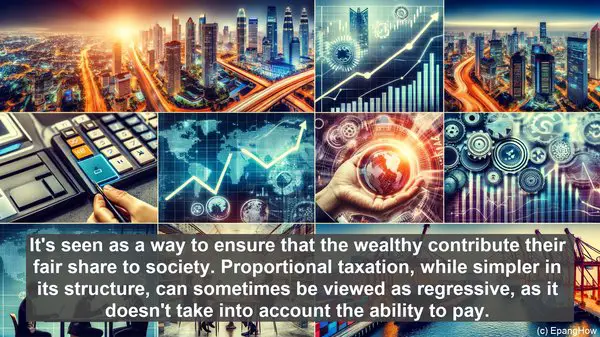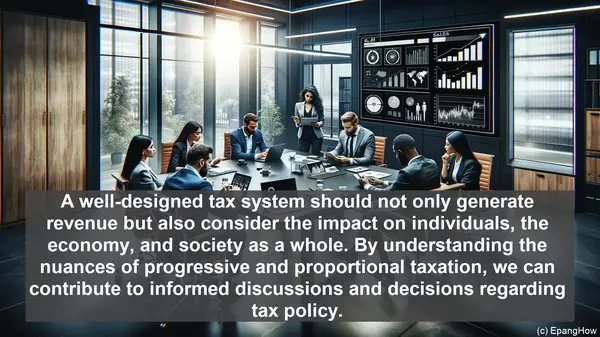Introduction: The Essence of Taxation
Hello and welcome to our article on progressive taxation and proportional taxation. Taxation is an essential aspect of any society, as it provides the necessary funds for public services and infrastructure. However, not all tax systems are the same. Today, we’ll delve into the nuances of progressive and proportional taxation, exploring their core principles and how they impact individuals and the economy.
Progressive Taxation: A Graduated Approach
Progressive taxation is a system where tax rates increase as income rises. In other words, the more you earn, the higher percentage of your income you contribute as taxes. This approach is often seen as a way to achieve income redistribution, as it places a heavier burden on high-income individuals. For example, someone in the top tax bracket might pay 30% of their income in taxes, while someone in a lower bracket might only pay 10%. This progressive nature aims to ensure that those who can afford to contribute more do so, potentially reducing income inequality.

Proportional Taxation: A Flat Rate for All
On the other hand, proportional taxation, also known as a flat tax, applies the same tax rate to all income levels. Regardless of whether you earn $10,000 or $1 million, you’ll be taxed at the same percentage. This approach is often viewed as simpler and more transparent, as it treats all individuals equally in terms of their tax obligations. However, critics argue that it may disproportionately impact low-income earners, as the tax burden can be relatively higher for them compared to high-income individuals.
The Impact on Government Revenue
One crucial aspect to consider is the impact of these tax systems on government revenue. Progressive taxation, with its higher rates for the wealthy, can potentially generate more revenue for the government. This additional income can then be utilized for various public initiatives, such as education, healthcare, or infrastructure projects. Proportional taxation, on the other hand, may result in a more consistent revenue stream, as the tax burden is evenly distributed across all income levels. However, it may not provide the same level of flexibility in terms of generating significant additional funds.
Economic Implications: Incentives and Disincentives
Tax systems can also have a profound impact on individual behavior and economic decisions. Progressive taxation, by taxing higher incomes at a higher rate, can create a disincentive for individuals to earn more. After all, if a significant portion of your additional income goes towards taxes, the motivation to work harder or take on more responsibilities might diminish. Proportional taxation, with its flat rate, may not have the same effect, as the tax burden remains constant regardless of income level. This can potentially encourage individuals to strive for higher earnings, as they know their tax obligations won’t increase disproportionately.
Public Perception and Political Considerations
Taxation is not just an economic matter; it’s also highly influenced by public opinion and political considerations. Progressive taxation, with its focus on redistributive principles, often garners support from those who advocate for social equity. It’s seen as a way to ensure that the wealthy contribute their fair share to society. Proportional taxation, while simpler in its structure, can sometimes be viewed as regressive, as it doesn’t take into account the ability to pay. These differing perceptions can shape political debates and policy decisions surrounding tax systems.

